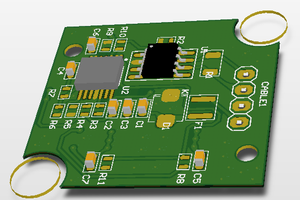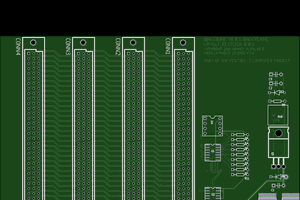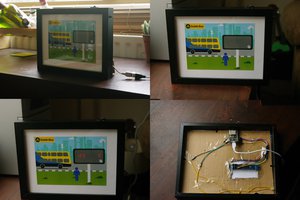Avalon bus-master peripheral driving bus-slaves (with HPS read-out and control)
-- External bus to Avalon Bridge
Student generated modules will need to be Avalon bus-slaves when
controlled by the HPS, but under some conditions will need to be
bus-masters. For instance, building a module which writes directly to
the VGA interface would require a bus-master ability. The first example
uses the University Progam External Bus to Avalon Bridge
(EBAB) module as a bus-master which addresses either the LEDs or the
HEX display to display numbers set on the toggle switches, and with a
write-enable using ~KEY[0]. The HPS C-code reads and displays the SW and KEY peripherials. The Qsys layout
has just the HPS, parallel ports for the LEDs, HEX display, switches,
and buttons, and the EBAB module. The LEDs and HEX display are hooked to
the
external-to-avalon
master. The SW and KEY are hooked to the HPS h2f_lw_axi_master. (top-level, hex decoder, project ZIP). This code ignores the Avalon ACK bit and does not read any data.
-- Controlling the bus-master from the HPS
In the second example, the HPS uses a keyboard command interface
to choose the HEX or LED device address which is used by the EBAB. The
FPGA side has a small state machine which counts time and uses the EBAB
to display the count on the HEX or LED devices. The state machine also
handles the bus-write setup and waits for the Avalon bus ACK. The Qsys layout
converts the switch PIO into an output getting data from the HPS
light-weight bus. This new output is used for the device address by the
EBAB. (top-level, project ZIP).
This example is a model of how a hardware computational unit might be
controlled by the HPS and interact with other bus-attached peripherials.
The bus transaction from EBAB to HEX display PIO takes two cycles
(write, ACK). I tested up to 100 MHz state machine rate, for a bus rate
of 50 million/sec.
--
The logical sequence is: A C-program outputs a bus address to the
h2f_lw_axi_master address (of the ARM) which is mapped to a PIO unit on
the Avalon bus. The PIO unit exports the address value to the FPGA
fabric, which also contains the EBAB. The EBAB uses the address (from
the PIO) to set its own write address back onto the Avalon bus.
-- Multiple bus-masters to one bus-slave
The Qsys bus generator constructs arbitration hardware for various
configurations of masters and slaves. I wanted to test the operation of
multiple bus-masters talking to one bus-slave. The previous example was
extended to have two EBAB units, one controlled as before with its bus
address controlled by a C program.
The other was set to always write to the HEX display. The phase of the
write-clock was set up so that they write at different times. Each
bus-master counts at different rates. The counts are displayed on the
HEX displays and for bus-master one, on the LEDs, when chosen. The Qsys layout shows that both the EBAB masters connect to the HEX display. (top-level, project ZIP).
--
A modification of the top-level module
changes the bus request rate to 3.1 MHz, uses the SW input to set the
delay between bus write-requests, and puts the two write-requests and
the two ACK bits on the GPIO_0 port for view on an oscilloscope. If the
separation is zero and addresses are set to the same bus_slave, then one write-request is stretched to two cycles (top trace) while the bus is busy with the other. If two different bus-slaves are addressed by the two bus-masters, or the time between write-requests is one cycle or more, then there is no collision and the write-requests are each one state-machine cycle
long. Synchronization in the bus-master state machines depends on
reading the ACK bits returned from the Avalon bus. Which write-request
actually gets stretched, when they are on the same cycle, seems to be
randomly determined by race-conditions.
-- Video display bus_master with HPS
A bus-master to control video display is useful for many projects.
Interfacing...
 Bruce Land
Bruce Land

 Keith
Keith
 Hosein Movahedian Attar
Hosein Movahedian Attar
 Samuel A. Falvo II
Samuel A. Falvo II
 Seamus de Cleir
Seamus de Cleir
You could follow the link to the page
https://people.ece.cornell.edu/land/courses/ece5760/DE1_SOC/HPS_peripherials/index.html